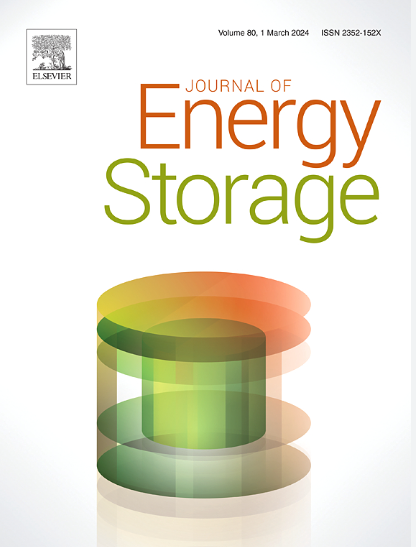Extracting health indicators from a single cycle of data based on the aging mechanism to accurately predict the knee point and remaining useful life of spent lithium-ion battery
IF 8.9
2区 工程技术
Q1 ENERGY & FUELS
引用次数: 0
Abstract
Spent lithium-ion batteries will degrade quickly and unpredictably to failure after the knee point. Therefore, predicting the knee point is a key prerequisite to forecast the remaining useful life (RUL) for evaluating the reuse value of spent lithium-ion batteries (LIBs). Given the lack of historical data and the need for minimal testing time in the large-scale application scenarios of huge spent battery value assessments, this work proposes a feature engineering method based on battery aging mechanisms to identify health indicators (HIs). Furthermore, these HIs are used for the knee point and RUL prediction. The proposed method does not require historical data and can accurately predict the knee point and RUL using data from any one of cycle within the entire battery life cycles. Testing on two typical datasets with samples of Li(NiCoMn)O2 and LiFePO4 LIBs, the mean absolute error, MAE (mean absolute percentage error, MAPE) for predicting the knee point is only 47.15 cycles (10.60 %) and 13.63 cycles (6.38 %) in the two different datasets, respectively. The MAE (MAPE) reaches as low as 40.70 cycles (8.11 %) and 11.81 cycles (5.04 %) for the RUL prediction, respectively. The proposed method demonstrates excellent predictive accuracy and time-saving performance, and then a significant practical value.

基于老化机理的单周期数据提取健康指标,准确预测废锂离子电池的膝点和剩余使用寿命
使用过的锂离子电池会在膝盖点之后迅速退化并不可预测地失效。因此,膝关节点预测是预测废锂离子电池剩余使用寿命(RUL)以评估废锂离子电池再利用价值的关键前提。针对大规模废电池价值评估应用场景中缺乏历史数据和测试时间要求较低的问题,本文提出了基于电池老化机制的特征工程方法来识别健康指标(HIs)。此外,这些HIs用于膝关节点和RUL预测。该方法不需要历史数据,并且可以使用整个电池生命周期内任何一个周期的数据准确预测膝盖点和RUL。在Li(NiCoMn)O2和LiFePO4 lib样本的两个典型数据集上进行测试,预测膝关节点的平均绝对误差MAE (mean absolute percentage error, MAPE)在两个不同数据集上分别仅为47.15个周期(10.60%)和13.63个周期(6.38%)。RUL预测的MAE (MAPE)分别低至40.70周期(8.11%)和11.81周期(5.04%)。该方法具有良好的预测精度和节省时间的性能,具有重要的实用价值。
本文章由计算机程序翻译,如有差异,请以英文原文为准。
求助全文
约1分钟内获得全文
求助全文
来源期刊

Journal of energy storage
Energy-Renewable Energy, Sustainability and the Environment
CiteScore
11.80
自引率
24.50%
发文量
2262
审稿时长
69 days
期刊介绍:
Journal of energy storage focusses on all aspects of energy storage, in particular systems integration, electric grid integration, modelling and analysis, novel energy storage technologies, sizing and management strategies, business models for operation of storage systems and energy storage developments worldwide.
 求助内容:
求助内容: 应助结果提醒方式:
应助结果提醒方式:


